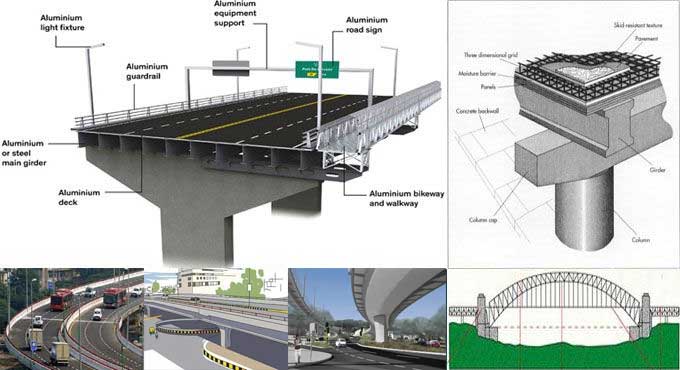
Varieties of Flyover design and its construction process

Flyovers are bridges that connect railroads or roads. A flyover is also known as an overpass or high road bridge that crosses a highway or intersection.
It is important to note that there is a big difference between the construction of a bridge and the construction of a flyover depending on the purpose of the bridge and its location.
A bridge is a structure that connects two separate locations. It is a natural region that occurs naturally, such as a valley, a river, a sea, or any other body of water that can be found.
In comparison, the purpose of a flyover is to facilitate the connection between two points in a congested area or at an intersection of two roads.
Bridges and flyovers provide passage over obstacles without blocking the path below. Roads, railways, or valleys can provide the passage needed.
The Different Varieties of Flyovers
The use of flyovers for traffic management when crossing the road is divided into two types.
Clover Leaf Junction Flyover
A cloverleaf junction is also a grade separator. A large area of land is required since it was developed in America. So that traffic can move at its own pace, conflicting traffic streams are avoided.
There is no need to weave or slow down the road, which is an advantage over the Simple Flyover.
Whenever a crossroad is approached, there are three ways to go and four ways to approach it. The total number of connections should be 4 x 3 = 12.
Simple Flyovers
A bridge providing foundations in both directions is being used in this case to make it possible for fast traffic to pass over a level that is high, and a slow walk is being made possible to pass underneath it.
Due to this, traders are forced to go through two different levels in order to trade, and as a result, they miss out on the risk. It will be necessary to provide traffic lights at intersections beneath the flyovers in order to ensure that anyone approaching from any direction will be able to access all other directions even after the flyover is completed.
Design of the Flyover
Flyover Design has played a significant role in reducing and diverting traffic in large cities in the past few years due to the increasing number of flyovers.
The flyover can be transversed vertically with the help of a hydraulic jack. Composite materials, such as concrete and metal, are used in the construction of the Flyover.
Through pile foundations, loads are transferred deep into the soil. Materials like aluminum and steel are used for the deck's and pier's structural members.
When land acquisition costs are high and densely populated areas are in need of flyovers, flyover design is done.
Designing a flyover is a complex problem that requires the application of a combination of ingenuity and practicality as well as meeting the basic economic and security requirements.
The construction of a flyover follows a basic design philosophy that a structure should be designed to support every action that will likely occur over its intended lifespan.
Moreover, as the structure ages and undergoes unprecedented action, it must remain stable over time, and it should be able to maintain a sufficient level of firmness over the course of its lifetime.
Steel bridges and flyovers have a rich history in India, and the country has built many of them. In most cases, a Flyover is built to pass through low terrains or at intersections of roads that link long distances and are constructed to cross over one span or multiple spans, depending on the situation.
Most Indian cities suffer from traffic congestion because of their high population density.
This problem can be solved by the construction of flyovers over the highway. A flyover constructed by R.C.C can take a long time to construct, and the traffic will be affected. In addition, the construction of a flyover using R.C.C has a low level of earthquake resistance.
In order to overcome this failure, steel sections can be used in the construction of flyovers, but their construction costs are high at the start of construction.
Features of a Flyover Design
There are three main features of the flyover design.
1. An abutment and columns (also known as piers) support the weight of the flyover?s foundation.
2. Abutments provide support for the final section of a flyover by connecting the end of a flyover to the road carried by land.
The Construction of a Flyover
Flyovers are basically bridges that cross over another section of the road. During the construction of a Flyover, the following steps must be followed.
1. Initially, the alignment of the flyover has been determined and the pier area and the cleaning area have been set up. The pile will be driven to the right depth if there are a lot of abutments or pillars, in which case they will dig to the appropriate depth.
To learn more, watch the following video tutorial.
Video Source: Civil Engineering
2. Forms are either placed on the ground or on the lower part of the foundation.
3. Construction workers will dig in the right depth, compact the subgrade material, and possibly build a levelling slab or rat slab if the construction area has a shallow footing.
4. Forms are either placed on the ground or on the lower part of the foundation.
5. The concrete abutment or pier column is then placed.
6. As you construct the pier caps and abutments, you should also construct the pier caps.
7. We can then install steel or precast girders, or box girders.
8. Once the deck is built, we can either use precast slabs or lay concrete decking.


